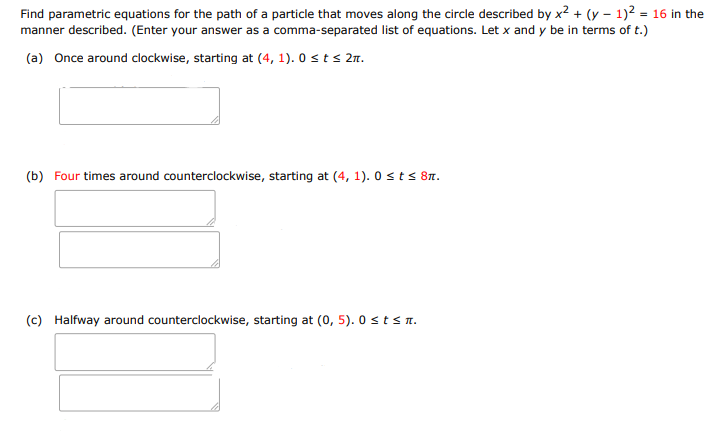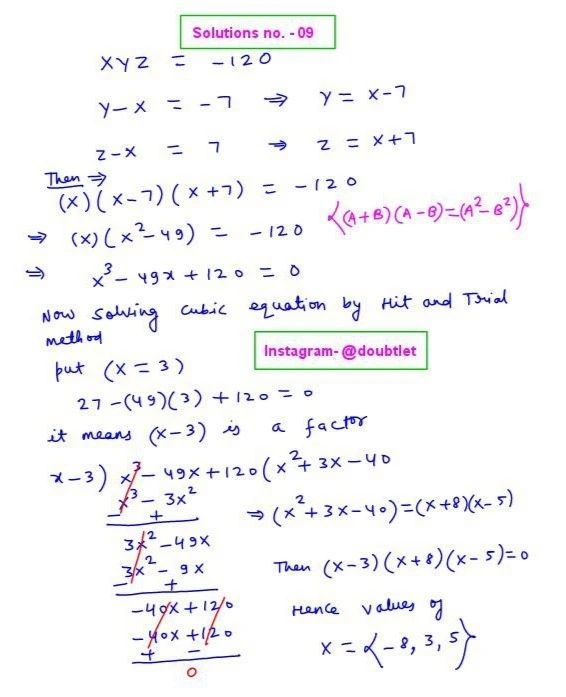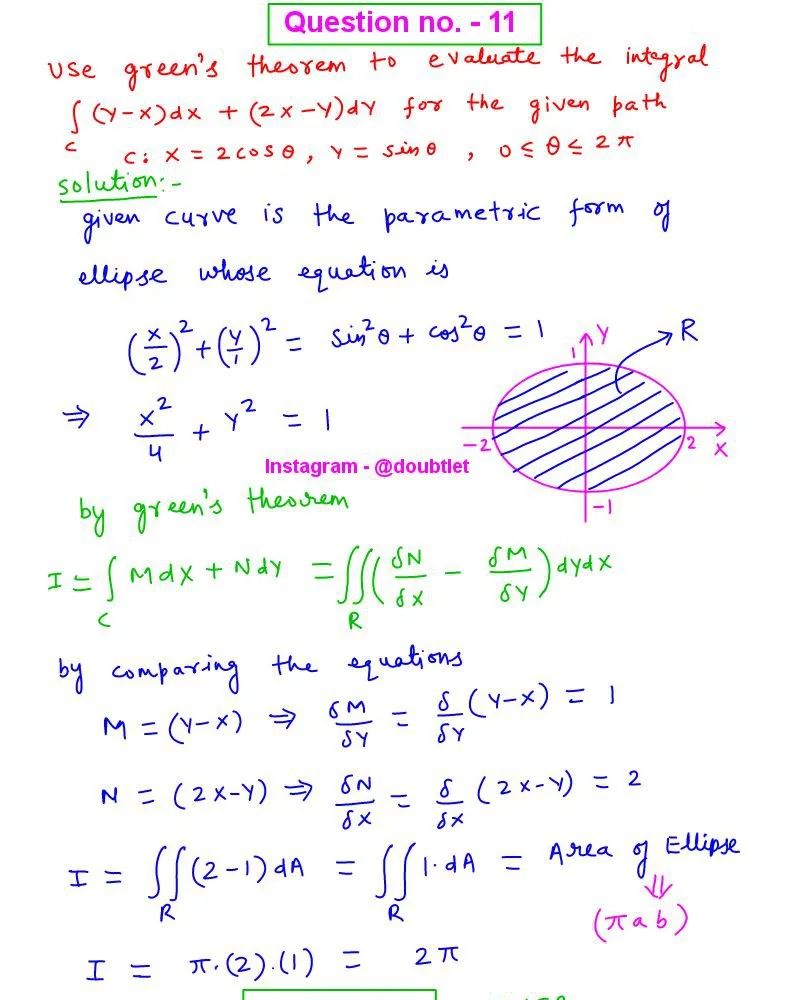









Find parametric equations for the path of a particle that moves along the circle described by in the manner described. (Enter your answer as a comma-separated list of equations. Let and be in terms of .)
(a) Once around clockwise, starting at . .
(b) Four times around counterclockwise, starting at . .
(c) Halfway around counterclockwise, starting at . .
Find parametric equations for the path of a particle that moves along the circle described by in the manner described. (Enter your answer as a comma-separated list of equations. Let and be in terms of .)
(a) Once around clockwise, starting at . .
(b) Four times around counterclockwise, starting at . .
(c) Halfway around counterclockwise, starting at . .
Question :
Find parametric equations for the path of a particle that moves along the circle described by in the manner described. (enter your answer as a comma-separated list of equations. let and be in terms of .)
(a) once around clockwise, starting at . .
(b) four times around counterclockwise, starting at . .
(c) halfway around counterclockwise, starting at . .

Solution:

Neetesh Kumar | January 3, 2025
Calculus Homework Help
This is the solution to Math 1c
Assignment: 10.1 Question Number 9
Contact me if you need help with Homework, Assignments, Tutoring Sessions, or Exams for STEM subjects.
You can see our Testimonials or Vouches from here of the previous works I have done.
Step-by-step solution:
Understanding the Circle and Its Parametrization
The given circle is described by the equation:
This is the equation of a circle centered at with a radius of .
The general parametric equations for a circle are:
where is the center of the circle, and is the radius.
In this case, , , and . The parametric equations become:
The direction (clockwise or counterclockwise) is determined by how progresses.
Part (a) Once Around Clockwise
For clockwise motion, the angle decreases with .
Thus, we use in the cosine and sine functions.
The parametric equations are:
Using trigonometric identities ( and ):
Answer for (a):
for .
Part (b) Four Times Around Counterclockwise
For counterclockwise motion, we use the regular parametric equations.
Since the particle goes around four times, the range of becomes .
The parametric equations are:
Answer for (b):
for .
Part (c) Halfway Around Counterclockwise
Starting at corresponds to the topmost point of the circle, which occurs when .
From there, the particle moves counterclockwise halfway around the circle.
The range of is adjusted so that corresponds to .
To achieve this, we shift the parameter by :
Using trigonometric identities ( and ):
Answer for (c):
for .
Final Answers
(a)
(b)
(c)
Please comment below if you find any error in this solution.
If this solution helps, then please share this with your friends.
Please subscribe to my Youtube channel for video solutions to similar questions.
Keep Smiling :-)
Comments(0)



Leave a comment